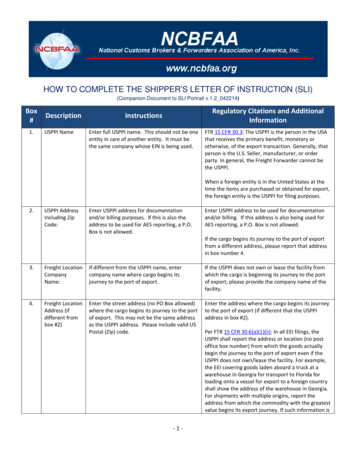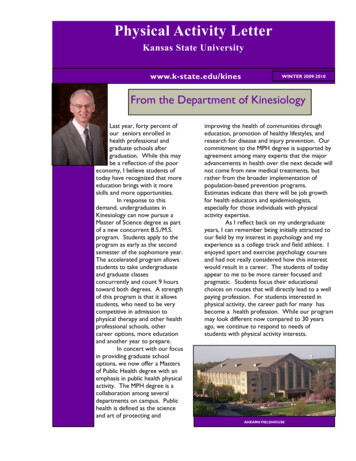
Transcription
Physical Activity LetterKansas State UniversityWINTER 2009-www.k-state.edu/kinesWINTER 2009-2010From the Department of KinesiologyLast year, forty percent ofour seniors enrolled inhealth professional andgraduate schools aftergraduation. While this maybe a reflection of the pooreconomy, I believe students oftoday have recognized that moreeducation brings with it moreskills and more opportunities.In response to thisdemand, undergraduates inKinesiology can now pursue aMaster of Science degree as partof a new concurrent B.S./M.S.program. Students apply to theprogram as early as the secondsemester of the sophomore year.The accelerated program allowsstudents to take undergraduateand graduate classesconcurrently and count 9 hourstoward both degrees. A strengthof this program is that it allowsstudents, who need to be verycompetitive in admission tophysical therapy and other healthprofessional schools, othercareer options, more educationand another year to prepare.In concert with our focusin providing graduate schooloptions, we now offer a Mastersof Public Health degree with anemphasis in public health physicalactivity. The MPH degree is acollaboration among severaldepartments on campus. Publichealth is defined as the scienceand art of protecting andimproving the health of communities througheducation, promotion of healthy lifestyles, andresearch for disease and injury prevention. Ourcommitment to the MPH degree is supported byagreement among many experts that the majoradvancements in health over the next decade willnot come from new medical treatments, butrather from the broader implementation ofpopulation-based prevention programs.Estimates indicate that there will be job growthfor health educators and epidemiologists,especially for those individuals with physicalactivity expertise.As I reflect back on my undergraduateyears, I can remember being initially attracted toour field by my interest in psychology and myexperience as a college track and field athlete. Ienjoyed sport and exercise psychology coursesand had not really considered how this interestwould result in a career. The students of todayappear to me to be more career focused andpragmatic. Students focus their educationalchoices on routes that will directly lead to a wellpaying profession. For students interested inphysical activity, the career path for many hasbecome a health profession. While our programmay look different now compared to 30 yearsago, we continue to respond to needs ofstudents with physical activity interests.AHEARN FIELDHOUSE
Page 2Youth Health Behavior Research LaboratoryThe Department of Kinesiology established the Youth Health Behavior Research Laboratory to organize ourefforts at identifying the factors that lead to childhood obesity and to develop community-based solutions to promotinghealthful eating and physical activity to solve this important public health problem. David Dzewaltowski directs thelaboratory and collaborates with faculty members in Kinesiology, Human Nutrition, Human Development andHorticulture, experts at several other universities across the U.S., and physical activity professionals in Kansascommunities.Over the last five years, we conducted a study in Lawrence Kansasexamining the impact of our Healthy Opportunities for Nutrition and PhysicalActivity (HOP’N) After-School program on the prevention of childhood obesityin fourth grade students. The study was funded by the United StatesDepartment of Agriculture. We partnered with K-State Research and Extensionin Douglas County, Lawrence Public Schools, and the Boys and Girls Club todeliver the program. Four elementary schools were randomized to receive theprogram and three were randomized to a comparison group. The HOP’Nprogram included after-school staff training and a daily physical activity sessionfor 30 minutes at a moderate-to-vigorous intensity, a daily healthful snack, and aweekly nutrition and physical activity curriculum experience called the HOP’NClub. Students in the HOP’N Club were given the skills ask their teachers and parents to provide healthyopportunities at home and in their community. One project had children go home a take pictures of the healthy orunhealthy physical activity and nutrition options. Then, they worked in the club to make a plan for changes as part ofHealthiest Home Makeover. The goal here was for children to have a picture of what ahealthy home environment should be. Our results showed that HOP’N increased afterschool physical activity opportunities and increased the moderate-to-vigorous physicalactivity of overweight and obese children. Furthermore, almost 80% of parentsreported that they received HOP’N materials and over 30% of parents actually madechanges in the home. If you want to know more about the program go to our websiteat www.hopn.org.In addition to benefiting children and scientific research, HOP’N also providedfunds for student research assistants. These research funds supported the studentseducation. The picture on the right shows the HOP’N team in 2007. David Dzewaltowski is in the back on the left.Next to him is Tanis Hastmann. Since 2007, Tanis received her MPH and currently in the lab seeking her Ph.D.Moving left to right, after graduation Laura Smith completed an R.D. internship, Danielle Young began physical therapyschool at Wichita State, and Amanda Aller became the Capital CityWellness Coordinator at the Kansas Department of Health andEnvironment. Finally, Ric Rosenkranz completed his Ph.D. and will begin afaculty position in Sydney, Australia in May. In the front, Sara Rosenkranzwill finshing her Ph.D and then will move to Sydney. Karla Fostergraduated with an M.S. and is a Research Associate in pediatric obesity atCincinnati Children’s Hospital. After completing Ph.D. degrees Paula Fordbecame an Assistant Professor at UTEP and Karly Geller became a PostDoctoral Fellow at the U. of Hawaii Cancer Research Center. Finally,Beth LaRue received her Nutrition and Exercise Science and enteredgraduate school. The success of these students illustrates how researchand federal grants benefits both research and education at K-State.
Page 3Focus on AlumniSandy Bell (BS 1974) started at Kansas State University in 1971 in the interior designprogram. Sandy found herself wanting a more objective field, and based on herinterest in science, moved to the Physical Education department with the idea ofmedical school. During her program work, Sandy moved more to education, andafter 3 and 1/2 years completed her undergraduate degree and began a career as aphysical education teacher. Sandy started out teaching at Basehor-Linwood withfuture stops in Dallas and Denver, where she worked in summer school on herMasters degree in Biology. Eventually, Sandy found herself in Tempe, Arizona whena unique job opportunity came available. State Farm insurance was looking forworkers. Sandy went into the interview with no clue about why an insurancecompany would be interested in a former physical education teacher, and walkedout with a fascinating new career. As claim team manager for State Farm, Sandy getsto utilize her anatomy and physiology, biomechanics, and kinesiology skills in anumber of different cases. Sandy leads a team of eight professionals who investigate,evaluate, and negotiate complex bodily injury claims from motor vehicle accidents.A primary task for the team is to determine if the type of injuries being claimedcould have occurred in the accident setting. Looking at forces generated, body responses, and muscle groups, the main questionis if the mechanism for injury is present. Sandy returned to visit Kansas State this Fall, and presented to students in the researchand measurement class about opportunities in Kinesiology. Sandy recalled a Physical Education faculty that was full of relaxed,friendly, and happy people who were great in giving back to the students. With a penchant for limestone, Sandy was reminded ofthe beauty of the Kansas State campus, and the good work ethic and values of the Midwest. Sandy reminded the students tonever dismiss opportunities. With a strong knowledge of the human system and working with humans, a growing number of jobopportunities are available to students with a Kinesiology degree. Born with a natural curiosity and desire to understand, SandyBell has found herself with a dynamic, exciting, and constantly changing career.Focus on the Faculty—Dr. Mary McElroyDr. Mary McElroy has the longest running tenure in the Department ofKinesiology joining the faculty in the Fall of 1978. Mary has been involved innumerous department activities over the years. In addition to playing a keyrole as the department’s evolution during the last several decades, she hasparticipated on key committees at the university level. She has alsoparticipated in key athletic issues serving two terms as a faculty representativeon the Intercollegiate Athletic Council. In more recent years she has playedan important role in the development of the university’s Masters in PublicHealth graduate program which offers one of the nation’s strongest programsin public health physical activity. Mary remains active in Kansas StateUniversity’s Women’s Studies and American Ethnic Studies programs.Mary has published numerous research articles and a number of books/monographs on social issues related to sport and physical activity. Her book,Resistance to Exercise, published by Human Kinetics, was the first full-lengthbook examining the role of American society in contributing to sedentary lifestyles. Currently, Mary is keeping busy by working ontwo book projects. The first one uses national data to examine the difficulties women face in balancing work and family roles andfinding time to participate in appropriate amounts of physical activity. The second project, a social history of African Americanhealth and physical activity, explores how the scientific progress in understanding of the importance of physical activity in theAfrican American community has taken a very different path than scientific interest among White Americans. Mary currentlyteaches undergraduate courses in social epidemiology of physical activity and diversity of physical activity along with a graduatecore course in the MPH program, entitled Social and Behavioral Principles of Public Health . Next year she will undertake the firstinternet delivered course in the Kinesiology Department.In her spare time Mary is a big sports fan and is a regular spectator at the US Open Tennis Tournament in New York everySeptember and can also be seen walking the fairways at many PGA golf tournaments. When not rooting for the K-State Wildcatsshe still has allegiance to her hometown baseball team, the New York Mets even when they are not playing well which has beenthe case most of the time in recent seasons.
Page 4Kinesiology Student Association Invited Speaker SeriesThe Kinesiology Student Association (KSA) initiated a new faculty invited speaker series in the Fall of 2009.Dr. Leo Ferreira presented the initial series talk on “Muscle Weakness and Fatigue in Chronic Disease” tothe Kinesiology students, faculty, and community on Thursday, November 19th. Dr. Ferreira’s workaddresses cutting-edge molecular signalingmechanisms involved in muscle fatigue andexercise intolerance. He employs a bench-tobedside approach where therapeuticinterventions that show promise in animalscan be investigated and implemented inpatients suffering from chronic disease.The KSA speaker series is designed to exposeKinesiology students to new, exciting researchin the field of physical activity and health. TheKinesiology program has developed into apremier pre-health and public health programFront Row : Dr. Poole, Dr. Ferreira, Dr. Barstowfor undergraduate students across theBack Row : Dr. Musch, Dr. Wong, Dr. Harmscountry. A recent survey of Kinesiologystudents indicated over 50% pursuing furthereducation in physical therapy, physicians assistant, chiropractic, nursing, occupational therapy and dieteticsschool. As health care needs increase and with a growing awareness of the importance of public health, theKinesiology department continues to grow at a rapid pace. Learn more about upcoming speakers, careers,and the department at the Kinesiology website at www.ksu.edu/kines .Class Notes– Alumni InformationSend us information about a new job, promotion, address change, area code change, marriage, or birth. Send us stories and photos fromyour days at Kansas State. Simply fill out the form below to help us keep our records up-to-date, or email information to the Kinesiologydepartment at kines@ksu.edu. Information provided below may be included in an upcoming issue of the Kinesiology newsletter. Mailyour updated information and comments to:Department of KinesiologyKansas State UniversityNatatorium 1AManhattan, KS 66506or fax your comments to: 785-532-6486 or e-mail: kines@ksu.eduNameLastFirstMiddleMaidenYear Graduated Major EmployerAddressCity State Zip
Page 52009 Kinesiology Scholarship BanquetOn April 16th the Union Pacific Train Depot once again provided aunique and memorable historic location for family, friends and facultyto recognize our most meritorious Kinesiology Majors. TheKinesiology Department is privileged to have amongst its ranks youngwomen and men who have distinguished themselves in so many nobledirections including: academia, altruism, competitive athletics,leadership and the arts. Not only did our awardees excel in multiplecategories, many of them held responsible jobs in the community tomake financial ends meet and one was a new mother! Indeed, ourcandidate pool was so impressive this year that the Scholarship andAwards Committee had many agonizing decisions to make and excellent candidates were surpassed by evenmore outstanding ones. On occasion the extensive list of candidate’s accolades left the Committeequestioning how an individual could, and did, find the time and energy to do so much: obviously outstandingtime management skills are a feature of these remarkable youngsters. It is doubtful that, since The Depotfirst opened its doors in 1866, its vaulted ceilings and storied architecture have hosted a group of youngsterswith more drive and potential to excel in their futures and serve the ‘greater good.’A complete list of awardees is given below. This year wasparticularly notable as it saw the very first KatherineHorridge Smith Scholarship awarded to Mindy Schrader.Dr. David Dzewaltowski, Head of Kinesiology, gave a briefintroduction to The Department and then David Poole,Chair of the Awards Committee introduced the awardeeswith a few personal words. Certificates were presented byDr. Craig Harms.As always the Kinesiology Faculty, students and our awardwinners recognize and extend their profound gratitude forthe generosity of the donors and their families withoutwhom there would be no awards.2009 Scholarship winnersThe 2009 Kinesiology Scholarship Award winnersPauline Compton: Brittany Dennis, Kara BowmanIto Family: Robert FieldsEva Lyman: Brianne RogersBarbara Moses: Nicole KeenanLarry Noble Fitness Promotion: Evan RappKatherine Horridge Smith : Mindy SchraderTelefund Scholars : Carlos Arana, Jenna EdigerMary Lois Rynders Sykes: Chanel Ebert, Anna Harmon, Heidi GolubskiDarlene J. Meisner Peniston Memorial: Nora Gehrke, Abby BradstreetAwards Committee: Dr. Mary McElroy, Dr. Rob Pettay, Dr. Craig A. Harms and Dr. David C. Poole, Chair.
Page 6Kinesiology Donor List 2009A big thanks for all the individuals who have helped support the Kinesiology program and studentsthrough the years. Contributions made throughout the year, during Telefund, and through specialrequests help fund student scholarships, provide faculty support, and provide academic support for thedepartment.(Gifts of 100 or more from July 1, 2008 – June 30, 2009) 1000- 4999Kathy and Mark HershbergerRollin and Carolyn AbernethyElizabeth and Ralph LaveryMary Ann and Larry JohnsonMarge MalkamesDuncan and Janice McGregorWarren and Nanci MeyerFrancis PenistonLou Jean MoyerKatherine SmithCharles and Suzanne NixTodd and Kathleen Rohr 250- 499Jason and Ginger RuckerTimothy and Linda DuncanElaine and Bill SearsOrlen and Kathy GrunewaldJack and Dee Ann SheldonDonna and Bill Stewart 100- 249Gordon WakemanDick and Sharon BarnardBenjamin WalkerLarry BergerDelores and Glenn WesleyDoug and Carol BoyleElizabeth and Chase WilsonLorie and Bert BraudGina and Brad WindholzRyan CollettWilliam CookHarold and Lou DorssomEarl ElliottPatricia EngellandMartha EwingVirginia and Donald HerrmanThis list is compiled as accurately as possible. If there are any discrepancies, please contactSheila Walker, director of development for the College of Arts and Sciences, at sheilaw@found.ksu.edu or 800-432-1578.
Page 7Physical Activity Education and Research ProgramsFund RaisingNAMELastFirstMiddleMaidenADDRESSCITY STATE ZIP PHONEMY GIFT IS E-MAILDirect my gift to where the Department has the greatest needDirect my gift to the following programDirect my give to following endowed accountContact me about a major giftThe Department of Kinesiology Appreciates Your Support. Please make your check payable to:The Department of KinesiologyMail to:KSU Department of Kinesiology1A NatatoriumManhattan, KS 66506The department of Kinesiology would like to thank you for your generous support of the department. Endowment from past donations allowsus to offer scholarships to undergraduate students, which certainly helps them in these times of tuition increases and enhances our recruitingof top students. General funds supplement the department’s operating budget to enhance our ability to provide a high quality of education toour students, to conduct research, and to attract and support new faculty.If you wish to donate to any of the Department of Kinesiology funds (see below) please complete the form above and check where you wouldlike you gift to go to. Please call us at 785-532-6765 or email at kines@ksu.edu if you have any questions.Endowed Kinesiology FundsKinesiology Excellence Fund (F35500)Darlene Meisner (Q31450)Katherine Horridge Smith (Q88202)Kinesiology Scholarship (Q28800)Noble Fitness Promotion Scholarship(Q81536)Ito Family Scholarship (Q72150)Eva Lyman Scholarship (Q77100)Evans Incoming Freshman Award ( Q63125)Baxter Pre-PT fund (Q52210)Sykes Family Scholarship (Q91475)Barbara Moses Scholarship (Q80390)
Department of Kinesiology1A NatatoriumManhattan, Kansas66506-0302Phone: 785-532-6765Fax: 785-532-6486E-mail: kines@ksu.eduA family traditionMichael Dedonder, a Fall, 2009 graduate in Kinesiology iscarrying on a long family tradition with his diploma. Michael isthe 16th K-State graduate from his father, Eugene Dedonder’sside of the family, with some 25 years of Dedonder’s on theKansas State campus. Michael began his career in nutrition as apre-optometry major, but finished as a Kinesiology majorheading to physical therapy school. An interest in the mind/body connection with a desire to fix what is broken sparkedMichael’s interest in Kinesiology. Michael learned aboutKinesiology from friends in the major, and the friendly faculty,family-type environment, and the assistance from thedepartment made his Bachelor degree program enjoyable.Getting his degree done and seeing KSU beat KU in basketballat home were some of his favorite memories of his time atKansas State. Michael looks forward to coming back for morefamily graduations and will continue to share his memories ofKansas State with future generations of Dedonder’s.Kara Bowman and Michael Dedonder atthe Fall, 2009 graduation ceremony
Moving left to right, after graduation Laura Smith completed an R.D. internship, Danielle Young began physical therapy school at Wichita State, and Amanda Aller became the Capital City Wellness Coordinator at the Kansas Department of Health and Environment. Finally, Ric Rosenkranz completed his Ph.D. and will begin a

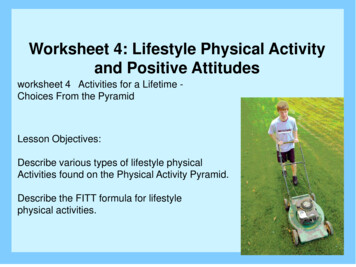

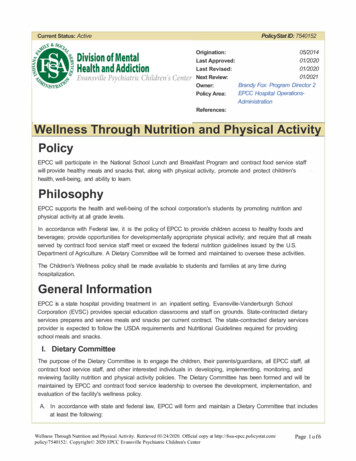
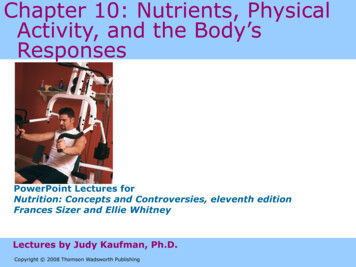
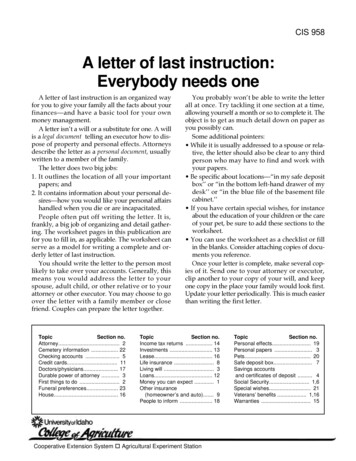
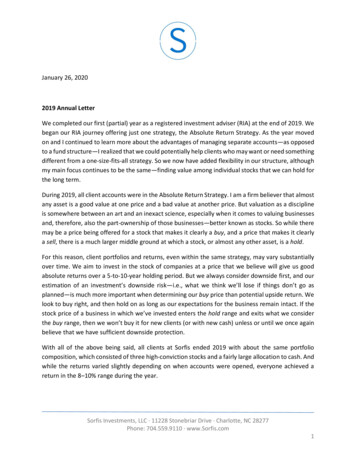
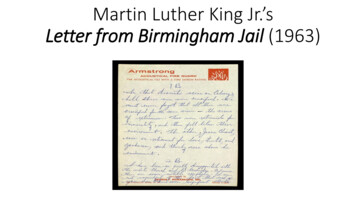
![Letter from Birmingham Jail (1963) [Abridged]](/img/2/1963-mlk-letter-abridged.jpg)
